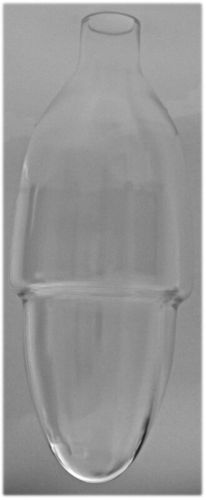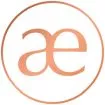According to Article 3(3)(c) EUTMIR, a 3D trademark is a mark consisting of a three-dimensional shape, including containers, packaging, the product itself or its appearance.
It is widely known amongst IP law practitioners that obtaining a 3D EU trademark registration is challenging. While it is possible to obtain a 3D registration for a trademark whose shape is unrelated to the product and service for which it is applied, the primary interest of 3D trademark applicants seems to be obtaining the registered trademark rights for a specific product.
These applications for 3D trademarks of a specific product are primarily and most commonly rejected based on EUTMR Article 7(1)(b) due to a lack of distinctive character, as it is difficult for the applicant to overcome this absolute ground by proving that the trademark is inherently distinctive or has acquired distinctiveness through use.
Even if the 3D trademark is deemed distinctive and thereby overcoming refusal due to lack of distinctiveness in accordance with EUTMR Article 7(1)(b), there are still many possible roadblocks ahead.
Specifically, EUTMR Article 7(1)(e) has proven difficult to overcome for the applicants of 3D trademarks. This article states that a trademark consisting exclusively of either of the following, shall not be allowed:
- the shape, or another characteristic, which results from the nature of the goods themselves;
- the shape, or another characteristic, of goods which is necessary to obtain a technical result;
- the shape, or another characteristic, which gives substantial value to the goods;
Even more problematic is the fact, that these reasons for refusal cannot be overcome by proving acquired distinctiveness through use.
While it can seem meaningless, these absolute grounds of refusal of a trademark serve to prevent potentially everlasting monopolies on generic products, and/or technical solutions through trademark rights. The absolute grounds of refusal are interpreted particularly restrictive in relation to 3D trademarks, since exclusivity is most often sought by the applicant to protect the appearance of the product itself, which can pose a severe threat against competitors' ability to exercise effective competition on the market. This is a fundamental part of EU law and is therefore unlikely to be changed anytime soon.
While few 3D trademarks for specific products have been granted over the last decade, a recent decision by the European General Court clearly illustrates the restrictive assessment and reluctance of the Court to grant exclusivity to a 3D trademark in the shape of a product.
Decision T-10/22 'Wajos"
A German food and liquor company ('Wajos GmbH'), applied for 3D EU trademark, in the shape of a bottle, for various foods and beverages in classes 29, 30, 32 and 33, including 'beverages consisting primarily of tea', 'beverages consisting primarily of cocoa', 'non-alcoholic beverages', and 'alcoholic fruit drinks' (1).

The EUIPO Examiner as well as the Board of Appeal rejected the application as they found the trademark to be devoid of distinctiveness pursuant to the absolute ground of refusal under EUTMR Article 7(1)(b), which, as stated above, is the most common reason for refusal.
Wajos GmbH brought the case before the General Court, which annulled the decision of the Board of Appeal. The judges found that the overall impression deviated significantly from the norms and customs in the relevant sector, and that the combination of the elements gave the bottle:
"A particular appearance that distinguishes it from bottles commonly available on the market, also taking into account the overall aesthetic result, since consumers are not used to containers that have a distinctively curved shape in the middle."
The shape of the bottle was therefore considered to be distinctive, thereby overcoming the hurdle of lack of distinctiveness from EUTMR Article 7(1)(b). As a result, the Board of Appeal was instructed to re-examine the application with the new information that the bottle was distinctive.
The Board of Appeal re-opened the application proceedings and, once again, rejected the trademark. However, this time the Board of Appeal based the rejection on EUTMR Article 7(1)(ii), concluding that the mark consisted exclusively of a shape which is necessary to obtain a technical result. Wajos appealed to the General Court.
First of all, The General Court found that the Board of Appeal was not precluded from refusing the application based on another absolute ground of refusal, since the absolute grounds of refusal apply independently of each other.
Subsequently, the General Court dismissed the appeal, and ruled that the 3D trademark application should be rejected, as the trademark consisted exclusively of the shape of a good which is necessary to obtain a technical result in accordance with the decision given by the Board of Appeal.
The General Court found the following technical elements of the bottle to be decisive:
- A tapered inflow and outflow area, which allows or facilitates the appropriate pouring out of the contents. On the other hand, it prevents or makes it more difficult for the product to leak or spill when the container is moved, even with non-liquid products, except for those that are usually removed with a spoon or other utensil that requires a wider opening.
- A bulgy main part, which tapers towards the bottom, and which allows the goods for which registration is sought to be accommodated.
- A beading, which separates the broader upper part from the narrower lower part of the container.
The General Court disregarded Wajos argument that the beading is not merely functional but connects the upper and lower part of the container in an unusual and aesthetic way, as the General Court instead found that a trademark will not overcome article 7(1)(e)(ii) on functionality simply because an essential and functional element has an aesthetic appeal or is unusual.
Reflection
The decision of the General Court serves as a reminder of the restrictive assessment of the absolute grounds of refusal in relation to 3D trademarks. The decision clearly illustrates that despite possessing distinctiveness, a 3D trademark can still fall short of registration as a registrable 3D EU Trademark insofar as all the important elements of the trademark are necessary to obtain a technical result.
It is important for brand owners to be aware of the challenges of obtaining a 3D trademark registration. If you are considering applying for registration of a 3D trademark, you should first consider whether alternative means of IP protection are capable of meeting your specific needs. If you decide to apply for 3D trademark registration, you should endeavor to ensure that the 3D trademark is both distinctive and, additionally, contains important non-functional elements which are sufficient to overcome the absolute ground of refusal in article 7(1)(e)(ii) of the EUTMR. That being said, if you have a product that is of significant importance to you, you may consider pursuing such a 3D trademark, as you will then have a registered right that will last indefinitely with proper maintenance and continual use.
If you are interested in learning more about the protection of 3D trademarks, we are more than happy to assist.
The content of this article is intended to provide a general guide to the subject matter. Specialist advice should be sought about your specific circumstances.


